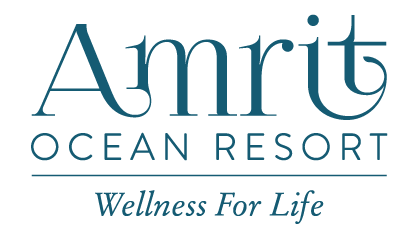In a world of constant stimulation, stress management has become paramount to modern Americans. If left unchecked, chronic stress can lead to disease, burnout, and apathy. Before these effects take place, a mindful individual should realize his/her inherent ability to heal both mind and body.
In this blog, I aim to outline stress management techniques through the lens of our mindset, identification of triggers, what a perfect day looks like, the use of lab testing and supplements, and meditation methods that work for you.
Mindset
I believe that the distinguishing factor in our ability to identify and confront challenges is our mindset. Simply put, the way we relate to the world will have a direct effect on the outcome of our burdens and successes.
If we believe that we have the power to make a change, we incline the mind toward our inherent ability. Conversely, if we are a “half glass empty” type of person, we have put ourselves into a container incapable of seeing the light in tough circumstances. Hence, we have already failed to live to our highest purpose.
The inclined mind realizes that setbacks are nothing more than a changing tide. Instead of fighting the direction of the waves, we understand that change often happens in stages. Much to the chagrin of our desire for progressive and consistent improvement, we must realize that life is flux. As such, our ability to adapt to these changes holds more weight than a false desire to have things happen instantaneously.
In a sense, we must let go. This isn’t to say that we should become passive in our lives, but that we must realize that our lives are more than our perceived control. Life doesn’t exist in a vacuum: it is about adaptation.
Identifying Triggers
Although it might take time to build mindfulness into our lives, our first step is to identify triggers that result in stress.
I like to classify these triggers into the things that I can avoid, and those that I cannot. Getting started with the things I cannot control, I realize that situations with family members, work colleagues, work crises, and travel dilemmas might be beyond my immediate ability to handle.
In these situations, I ask myself, “What would this be like if it was easy?” A simple question, at a minimum, it holds immense meaning. If I were to handle this situation like the best version of myself, what would be the steps to overcome the burden?
When it comes to situations that are out of my control, I try to match the responses to these dilemmas with my ability to adapt. Are these responses ideal? Perhaps not. But do they approach the inclined mind of positivity, mindfulness, and collective growth? Absolutely!
Further, many of us struggle with time management. We might not be able to stick to our ideal schedule. But that’s no reason to derail the progress in our goals. I always encourage my clients and students to break down the components that we can control.
A Perfect Day
I am a big believer in templates for my training and health coaching clients. I proposed a question earlier: what would this be like if it was easy?
The answers can vary person-by-person, but I propose writing out what the typical day would be like. Here’s what my day would look like:
1. Wake up without an alarm.
2. Brush my teeth, drink 1 liter of water with added salt for minerals/hydration, make Dandelion Root Tea, sit down to read a book (fiction, non-fiction, work-related on a rotating basis) for 30 minutes.
3. Write in my gratitude journal, followed by writing in my daily tasks – focusing on the three big items that take care of smaller tasks.
4. Check my email and texts for any essential “fires” I may need to put out that day
5. Take a short walk outside to allow the sunlight to prime my circadian rhythm
6. Begin work while listening to classical music, diffusing essential oils, and drinking purified water.
7. Outline projects, work through client programs, host online clients via facetime.
8. Take a one hour break from work to fulfill my daily exercise
9. Eat lunch. I pay attention to each bite and do not allow stimulating video or reading to hamper my digestion.
10. Back to work
11. Finish work: go outside for archery practice. Stress reduction much? I might also take a hike during this time, depending on my plans.
12. Make dinner. Again, pay attention to the blessing and sustenance of the food.
13. Free time! Netflix and Chill, video games, date night.
14. Bedtime Routine: 1-2 hours before bed, put on blue light blocking glasses, make chamomile tea, more journaling, dimming the lights.
15. Lights Out! Restful sleep ensues.
This day would be a perfect one. However, this isn’t how most days will go. There will be fires to put out, clients will be late for their sessions, and I might need to run to the grocery store. Life takes a different turn every other day.
Instead of developing “stinking thinking” about the things that went wrong, I will incline the mind toward knowing that these things will happen. My schedule will change from the ideal, and that’s ok. What I have is mindfulness. This is how we reduce stress and win at life.
Hormones/Supplements
In many cases, we can pinpoint the effects of chronic stress. Lab testing like the DUTCH Test will show the rhythm of cortisol: we know that cortisol should be highest in the morning and gradually subside by
night. This relationship is inversely related to melatonin. As circulating levels of cortisol decline by day’s end, we see a dramatic rise in melatonin that lulls us to sleep.
Day in and day out, this process regulates our biology. This is one reason that we need to promote a healthful circadian rhythm that supports doing our daily tasks, but then recovering and fulfilling our rest requirements.
Regarding stress reduction, you’ve probably heard a lot about cortisol. In the acute phase, cortisol levels might be higher at certain, stressful times of the day. But beware! Chronic stress will cause cortisol levels to plummet. This is what’s known as HPA Axis Dysfunction, aka “Adrenal Fatigue.”
Although these levels of hormone fluctuation vary, they present a healing opportunity to humans. We must realize that our external stressors can manifest as internal stressors. If left unchecked, these internal stressors turn into external stressors, and it’s a bad cycle to be in.
In short, hormones play a significant role in stress reduction; the bottom line is that we can measure the effects of our stress and handle it accordingly with the right diet, rest, exercise, stress reduction, and supplementation.
Breathwork and Meditation
As humans, we have voluntary and involuntary actions in our bodies. While we need to participate in eating actively, our body automatically digests our food. Similarly, when we exercise, our heart beats faster. At rest, our heart rate is reduced.
The magical thing about breathing is that we can consciously control our rate of respiration. Even if we forget to breathe, our body will automatically do this for our survival. When we apply the principles of breathwork and meditation, we choose to honor our body and mind through this sacred connection.
When there is a stressful situation, we should focus on box breathing: inhale for 4, hold for 4, exhale for 4, and hold for 4. Each cycle of breathing is 16 counts. This equates to four breaths per minute!
I have seen many anxious individuals with high respiration rates – sometimes 20 breaths per minute! This is likely happening in the upper chest, which promotes the fight-or-flight sympathetic nervous system response. This is NOT GOOD! We need to breathe like a baby: through our stomach will full expansion of our lungs.
Breathwork techniques like these are entirely secular and don’t infringe on religious rights. However, defined techniques like Buddhist Vipassana meditation can be beneficial for the right person. I promote silent retreats at monasteries to many of my type-A clients. These can bridge the gap from old problems to new solutions.
Conclusion
I hope that this write-up serves you in your ability to handle stress. We must incline the mind to know that we are capable of change. We must be aware of the things we can control and those that we cannot and apply our practices toward handling dire circumstances and see that we are adaptable.
About the Author
JOHN PARKER – CSCS, FDN-P, CHEK
During my 10 years in the health and fitness industry, I have transformed the bodies and minds of people who recognize that time is their greatest commodity. For the men and women with hectic work lives and tight schedules, I aim my services to be comprehensive, sustainable, and within reach. No matter the goal, clients who hold their health paramount can expect all-inclusive support. Through email, text messages, phone calls, and online support, integrating training with life’s duties, training with me is streamlined for maximum success.
Health and wellness is the sum of multiple parts. It’s crucial that my busy clients understand the value that baseline lifestyle habits of diet, rest, exercise, stress reduction, and supplementation. Since my clients must be able to handle demands of their jobs, family, travel, and other stresses, I implement total lifestyle design into their programs. Through the use of diagnostic lab testing, I get a glimpse into the health of my clients’ hormonal, digestive, and metabolic systems. After I have identified any problematic areas, I can thoroughly design a lifestyle program oriented toward their goals of complete wellness.




